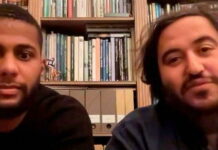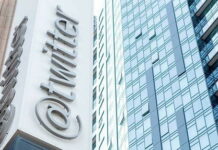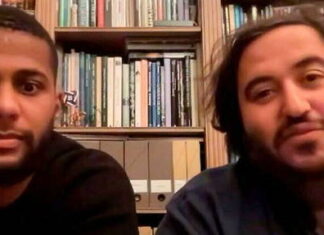The Middle Ages with Cluny, the Renaissance with Écouen, the 19th century with Orsay or the 20th century with Beaubourg already have their museums. And if all goes well, the “Grand Siècle”, that of Poussin, Le Nain, Georges de La Tour and Jules Hardouin Mansart, will finally soon have its own. Originally wanted by Patrick Devedjian, a great aesthete and collector, to house, among other things, the collection of Pierre Rosenberg, rich in works from the 17th century, this ambitious museum, whose mission of foreshadowing is led by historian Alexandre Gady, should be open its doors at the end of 2025. It remains to transform the immense volumes of the former Sully barracks (Saint-Cloud), empty for eleven years and owned by the Hauts-de-Seine department. It is the architect Rudy Ricciotti who has just been appointed to give shape to one of the most exciting cultural projects of the decade. Four years of work and an overall budget of 97 million euros are planned… He tells us.
Rudy Ricciotti: I didn’t know this place, quite confidential and forgotten, as if suspended in time, lurking between the A13 motorway and the Seine. I felt the same question there as the first time I saw Clyde Geronimi’s Sleeping Beauty: Will Aurora ever wake up from her eternal slumber? What appealed to me was the possibility of making this place a popular museum, which could make people want to better understand the history of our country. These days, that was my only goal. How to make you want, you say? By practicing an art that requires initiation. Secrets, then. Nothing put me off. Nothing puts me off in general, except pitted olives. Finally, even if this is not the meaning of your question, I will always keep in mind that this place is marked by the tragic disappearance of Christophe Dominici on November 24, 2020.
Access will be via the northern sector: a pedestrian square is planned to make access more fluid, more obvious. Access will also be possible from the Parc de Saint-Cloud. The recycling of built works is a benefit for the city, and the heterogeneity does not worry me: on the contrary, it is an opportunity to seize to create contrast, therefore awakening. For example, I can drink Châteauneuf with certain fish, unlike those who advocate homogeneity. Between hetero and homogeneity, I have long since chosen my side. The real complex and delicate challenge today is to produce generous architecture at the lowest possible cost. All public consultations are now based on this profession of faith: to be low on the cost of works, the fastest for studies. The rest, after forty years, I have mastered a little…
What are the spirit and main axes of your project? What materials are you going to use?
The spirit of the project could be summed up as follows: our era is defined on an identity base (man as subject and object) unlike the Grand Siècle, which was defined on a religious base (man as subject, God as object): there lies the difference in the possibilities of architectural answers. An identity-based, demonstrative architectural response, with no other virtue than its own revealed obsession, or an initiated and progressive response? The profound virtue of the initiated architectural response is that it offers fertile questioning through a journey. Progress is perhaps the only aesthetic possibility, the only intellectual honesty in an era that is free from any consideration for what is called wisdom.
Can you tell us more about the spectacular monumental staircase you plan to build?
The staircase you refer to is called a “Chambord” staircase, with a double helix. It allows you to take the same staircase for entering and leaving the exhibition, without crossings. This rather magical principle was obviously theorized by Leonardo da Vinci, even if he did not build the Chambord staircase.
And this set of trees and concrete canopy, what is it?
We have tentatively named it “Belvedere Pavilion” and it is the only museum building that will be constructed. Connected to the Charles X building by the basement, in a discreet and efficient way, the Belvedere is part of the tradition of the pavilion, or architectural folly, in the historical sense of the term: its composition in plan, rigorous and regulated, structured on a square frame, fits in a certain way with the heritage of the Grand Trianon: colonnade in peristyle, flat roof, transparency, generous luminosity, lightness… Its morphology comes from architectural “follies”, extravagant and naturalistic: forms organic and arborescent, pergola evoking an exoticism ardently dreamed of during the Grand Siècle. One of the singularities of this work is to propose a precious and scholarly architecture, resulting from the principle of structure. The architecture here is the structure, maybe a sculpture? Mineral and feminine sculpture, very elaborate, geometrically skilful: the material used is an ultra-high performance fiber concrete. Material requiring a certain initiation in applied mathematics, in stereotomy, in research applied to the physics of solids. The scholarly and initiated architecture of the Grand Siècle finds here a heritage commensurate with the challenges expected from this operation: the slight appearance of the Belvedere pavilion logically takes its place in the layout of the Sully barracks. Subtle balance of the masses between the Belvedere and its historical, miniature, architectural, creative surroundings: the filiation, the link between what was heterogeneous is partly resolved through this Belvedere pavilion, like a structural key.
What does this project represent in your career?
This is not the first time that I have transformed a barracks into cultural equipment… And it is a particular honor for me to demonstrate that this heritage of the armies is still available and convertible for the benefit of the French, France and the amateur public. of culture.


















